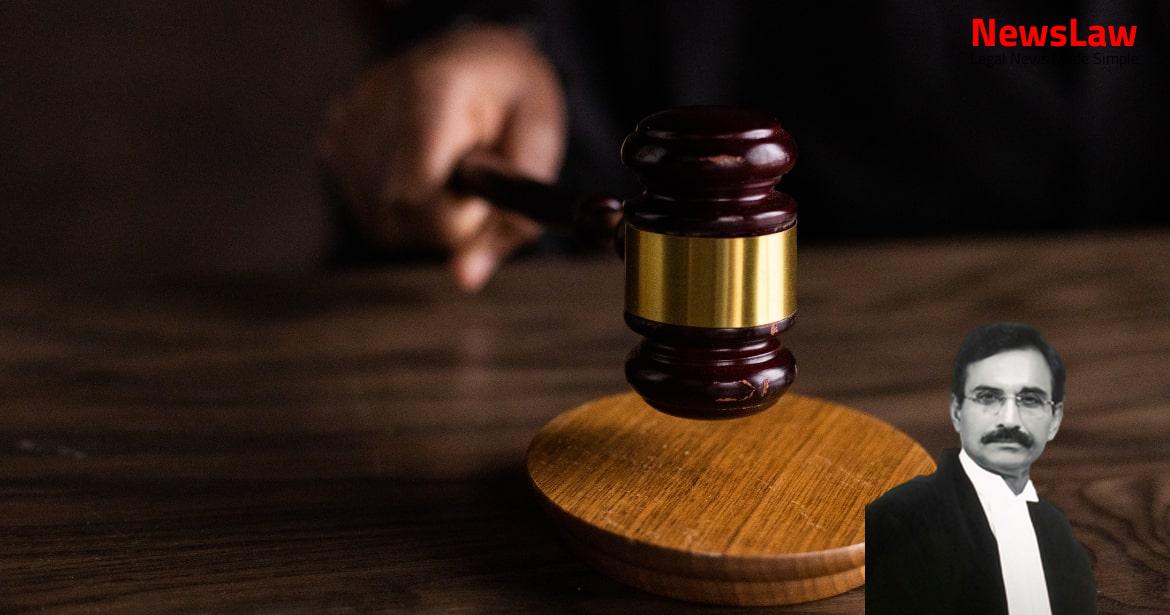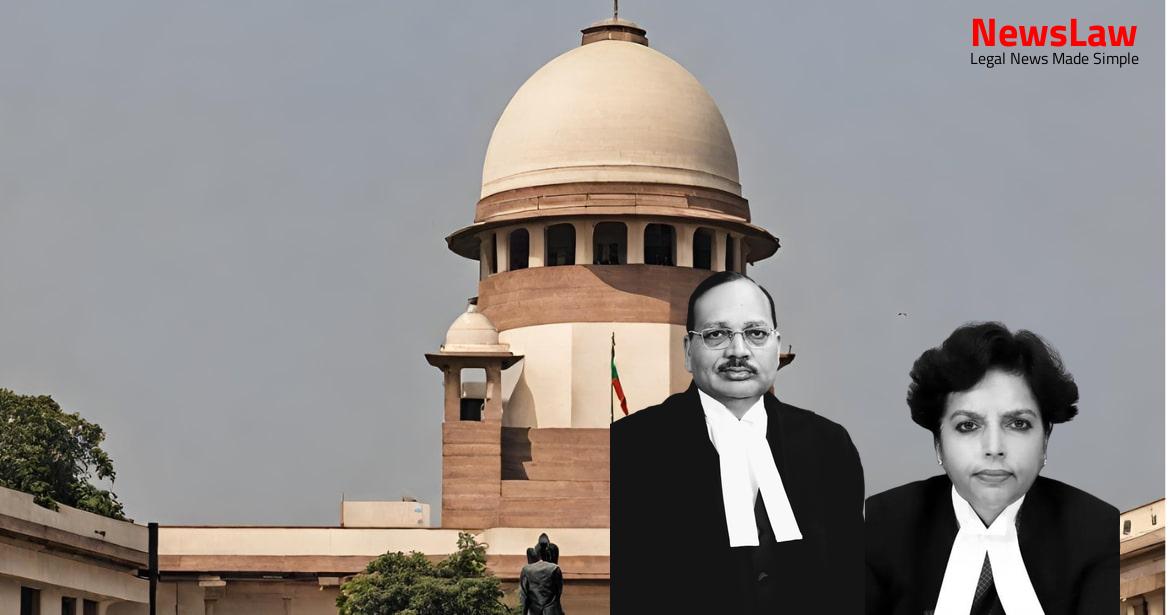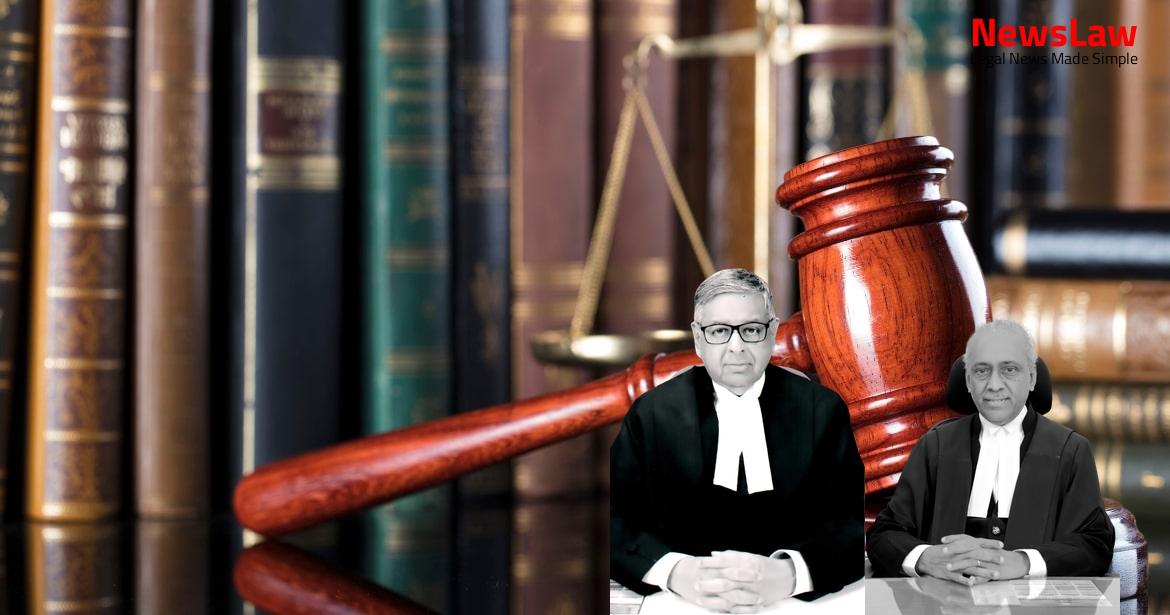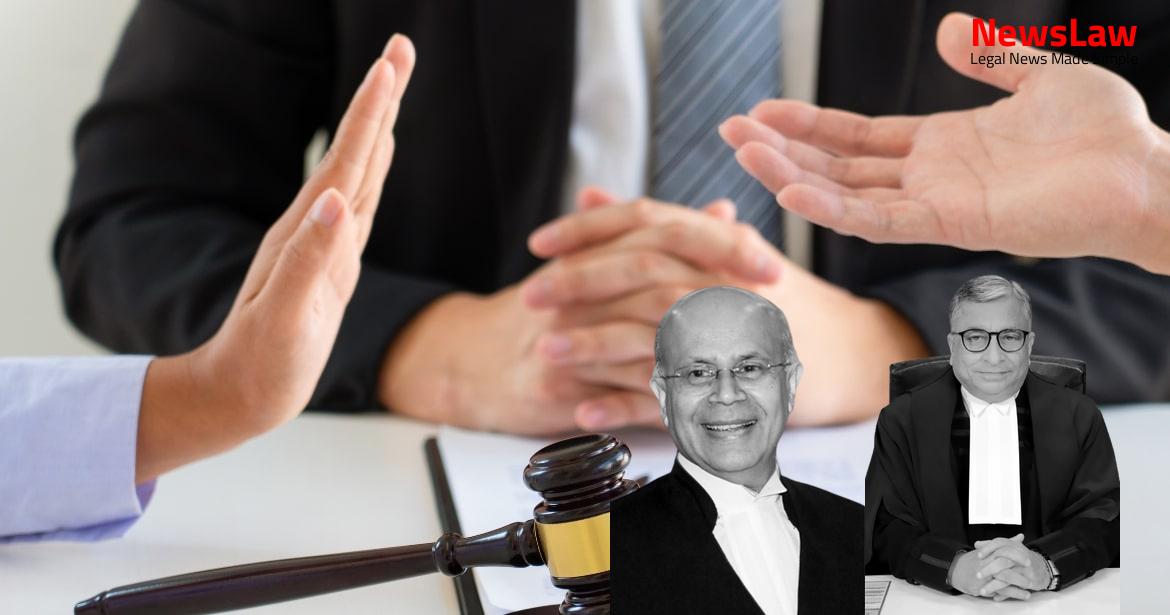Explore the meticulous examination conducted by the Division Bench of the High Court on the feasibility of reliefs sought in a partnership firm dissolution case. The focus remains on the court’s legal analysis rather than specific case details, shedding light on the application of partnership laws and pertinent contractual clauses. This summary showcases the importance of thorough legal scrutiny in determining the viability of relief claims in civil suits.
Facts
- The civil suit was filed seeking various reliefs related to the assets and properties of the partnership firm ‘Soorajmull Nagarmull.’
- The plaintiffs sought a declaration of their entitlement to the assets and properties of the firm as heirs of the original partners mentioned in the partnership deed of 6 December 1943.
- The plaintiffs also sought injunctions to prevent the defendants from representing the firm or dealing with its assets without authority.
- Mandatory injunction was requested to disclose full particulars of the firm’s assets, properties, and transactions for the purpose of dissolution.
- The ultimate relief sought was the dissolution of the firm and winding up of its affairs in accordance with the partnership deed.
- Division Bench of the High Court held that the reliefs claimed in the plaint could not be granted
- Appeals filed by the original defendants challenging the order of the Single Judge
- Issue of limitation considered a mixed question of fact and law
- Single Judge dismissed applications filed by the original defendants seeking dismissal of the suit
- Division Bench allowed the appeals filed by the respondents-defendants
- Single Judge’s order did not preclude the plaintiffs from presenting a fresh plaint
Also Read: Presumption of Genuine Endorsements in Cheque Case
Issue
- The Division Bench of the High Court extensively analyzed the issue of whether the reliefs claimed in the plaint by the plaintiffs could be granted.
- The consideration involved the application of the provisions of the relevant Act in conjunction with the clauses in the Partnership Deed.
- The High Court’s discussion emphasized the deliberation on the possibility of granting the reliefs as per the plaintiffs’ claims.
Also Read: Medical Negligence and Compensation: A Landmark Decision
Arguments
- Shri Jain argued that the Division Bench in the case of Dahiben conducted a mini-trial which is impermissible.
- He mentioned that the power to terminate a civil action under Order VII Rule 11 of CPC is drastic and cannot be routinely exercised.
- Shri Jain criticized the High Court of Calcutta’s Division Bench for allegedly erring in allowing the appeals and overturning the Single Judge’s decision.
- Shri Jain argued that the impugned judgment and order should be set aside.
- The Senior Counsel emphasized the need to read the plaint in its entirety to determine the existence of cause of action.
- Dr. Singhvi contended that the reliefs claimed in the plaint cannot be granted based on the provisions of the Indian Partnership Act and the Partnership Deed.
- He highlighted that firm dissolution requires consent of all partners or adherence to the partnership contract.
- Section 42 allows firm dissolution upon the death of a partner, subject to the partnership agreement.
- The Partnership Deed specified that the partnership would not automatically dissolve on the death of a partner, refuting the plaintiff’s submission.
- Section 44 stipulates that firm dissolution suits must be initiated by partners, which was not the case with the plaintiffs.
- The argument was supported by precedent cases like T. Arivandandam v. T.V. Satyapal and Pearlite Liners (P) Ltd. v. Manorama Sirsi.
- Senior Counsels for other respondents echoed similar arguments against the maintainability of the suit.
Also Read: Remand of Writ Petition for Restoration and Decision on Merits
Analysis
- A firm may be dissolved with the consent of all partners or as per a contract between the partners.
- Dissolution can occur on specific contingencies like expiry of a fixed term, completion of an adventure, death of a partner, or partner’s insolvency.
- Partnership at will can be dissolved by any partner giving written notice to all other partners.
- Only a partner of a firm can seek dissolution; non-partners cannot request dissolution or claim accounts for it.
- If the court finds that none of the reliefs claimed in the plaint can be granted, it should not send the parties to trial to avoid wastage of time, money, and energy.
- Parties should not be compelled to go through a lengthy trial if the requested reliefs cannot be granted based on pleadings.
- Allowing the suit to proceed to trial when the reliefs cannot be granted will serve no purpose.
- Parties have not prayed for leave to amend the plaint, and the court can make determinations based on the existing pleadings.
- In case of death or retirement of a partner, the estate of the deceased or the retiring partner is entitled to receive and be responsible for profits and losses up to the end of the accounting period.
- Partnership disputes shall be decided by arbitration as per the Indian Arbitration Act.
- The court has the duty to determine if the plaint discloses a cause of action and if the suit is barred by any law, as per Order VII Rule 11 of CPC.
- Bogus litigation should be dismissed at the earliest stage by the trial courts.
- The power to terminate a civil action under Order VII Rule 11 is drastic and must adhere to strict conditions.
- The reliefs in a plaint must flow from the cause of action pleaded.
- Partners of a firm are only entitled to profits and share in assets upon dissolution, not during the ongoing business.
- Partners, or legal heirs, do not have claim over firm’s assets while the firm is operational.
- The court should reject plaints that do not disclose a clear right to sue or have no cause of action.
- Enforcing a contract of personal service through a declaration is not permitted under the law.
- If none of the reliefs sought in the plaint can be granted, the suit should not proceed to trial.
- For dissolution of a firm, only the partners of the firm can seek it.
- The court must verify if the reliefs claimed are permissible under the law before allowing the suit to continue.
- Meaningful examination of the plaint is necessary to determine if a cause of action exists.
- Order 7 Rule 11(a) aims to prevent wastage of judicial time in cases where no cause of action is disclosed or the suit is barred by limitation.
- The power conferred under this provision is meant to stop sham litigation from needlessly prolonging court proceedings.
- The purpose of the court’s powers under Order 7 Rule 11 is to avoid meaningless and abortive litigations that waste judicial time.
- The court is duty-bound to determine if the plaint discloses a cause of action by examining the averments and documents relied upon.
- The court’s power to terminate a civil action under Order 7 Rule 11 is drastic and should strictly adhere to the conditions laid down.
- The underlying object of Order 7 Rule 11 is to prevent unnecessary protraction of proceedings when a cause of action is absent.
- In cases where sham litigation is identified, it is crucial to end the proceedings promptly to avoid wasting judicial resources.
- The Division Bench of the Calcutta High Court examined the plaintiff’s claims, relief sought, relevant legal provisions, and the Partnership Deed to determine that the relief sought in the plaint was not feasible.
Decision
- The appeals are dismissed as they are found to be without merit.
- Any pending applications will be considered as disposed of.
- No costs are awarded in this case.
Case Title: RAJENDRA BAJORIA Vs. HEMANT KUMAR JALAN (2021 INSC 514)
Case Number: C.A. No.-005819-005822 / 2021



